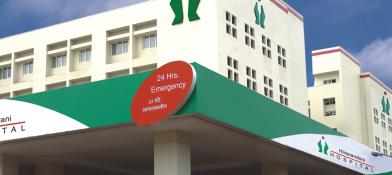Labor Induction
Overview
Labor induction, also referred to alternatively as inducing labor, is a procedure in which a medical professional starts the labor instead of letting it start on its own. This is done to hasten the process of childbirth whenever there is a risk to the health of the unborn child or mother. Induction lets the uterus contract before it starts beginning on its own during pregnancy for a vaginal birth.
An HCP recommends labor induction based on various factors like health; benefits outweigh the risks when the mother is past her due date and the natural labor stalls without progressing. The most crucial predicting factor is cervical ripening, which shows whether induction will succeed. Cervical ripening shows how soft and expanded the cervix is for giving birth.
Indications of Induction
Based on various factors like the mother's and baby's health, the status of the cervix, gestational age, weight, size, as well as position in the uterus, the HCP decides if labor induction must be done. Specific crucial indications include pregnancy lasting more than 41 to 42 weeks (post-term pregnancy), medical health conditions of the mother or baby, placental issues, baby's growth (fetal growth restriction), lack of enough amniotic fluid (oligohydramnios), infections (chorioamnionitis), gestational diabetes or hypertension, preeclampsia, pre-labor rupture of membranes (water breaks), peeling away of the placenta (placental abruption), and situations when the risk of continuing pregnancy outweighs the risk of a fetus born early.
Sometimes, labor can be induced electively (on choice) when there is high discomfort and a history of quick labor. Labor induction can be done at 39 weeks to reduce the chances of cesarean births, stillbirths, and developing hypertension.
Labor induction procedure
An HCP looks for cervical ripening before inducing labor. This gives them information about the success or failure of the induction. Cervical ripening softens, thins out, and opens the cervix. Based on a scoring system called the "Bishop score," the rate of readiness of the cervix for labor is determined. The cervix ripens and dilates to prepare for labor. Medications or devices can be employed to soften and dilate the cervix. Medications include prostaglandins that are given to ripen the cervix. But in case of a previous history of cesarean, these are not used to prevent uterine ruptures. Devices include laminaria, thin rods inserted into the cervix that dilate by absorbing water thus leading to cervical dilation.
In case of partial dilation of the cervix, stripping of membranes where an HCP uses a gloved finger to sweep between the amniotic sac and wall of the uterus is done to induce labor. This helps the body to release prostaglandins to soften the cervix and induce labor.
Oxytocin, a hormone that contracts the uterus, is also used to start or speed up labor. This can speed up the labor process rather than cervical ripening. About half an hour after oxytocin injections, labor contractions begin.
Natural breakage of the fluid-filled amniotic sac induces labor and starts contractions. Sometimes, if the water-filled sac does not break naturally, it is broken to induce labor and contractions. An HCP uses a particular device to make a hole in the sac to induce labor and contractions. This process is called amniotomy. Most of the mothers go into labor within a few hours after the amniotic sac breaks.
After induction
A thriving labor induction leads to vaginal birth. Sometimes, when induction does not lead to the progression of birth in 24 hours, a cesarean section is done.
Risks and complications
Risks of labor induction include failure of induction leading to cesarean section, low fetal heart rate due to medications used to induce, increased risk of infections due to rupturing the membranes, bleeding, and uterine rupture occurring along the previous uterine surgery.
Contraindications of Labor induction
Labor induction is not an option if one has had a previous cesarean section with a classical incision or major uterine surgery or in conditions of placenta previa (placenta is blocking the cervix), baby is in breech position (head up and buttocks down) or in transverse position (lying sideways), has active genital infections (herpes virus infection), or umbilical prolapse where even before delivery, the umbilical cord drops into the vagina.
Facts about Labor Induction
The time for This depends on cervical ripening. Based on the induction techniques and their combinations, labor can take minutes to hours. The fastest way to induce labor depends on the condition of the cervix and the individual's body. Depending on the situation, healthcare providers can best decide what type of induction works.
There are many factors to consider like what type of induction method was used and any anesthesia was given. Stripping of membranes causes mild discomfort, cramping, and spotting; breaking the amniotic sac causes a pop or pull sensation followed by loss of fluid from the vagina; medications may cause pain as they tend to contract the uterus and strengthen the labor contractions. Some might already take an epidural, which blocks the pain.
Conclusion
Labor induction is a vital intervention in scenarios where the health of the mother or baby is at risk or when the natural onset of labor is delayed. With careful consideration of factors such as cervical ripening and gestational age, healthcare providers use various methods, from medications to mechanical techniques, to initiate labor safely. While induction can lead to successful vaginal births, it also carries risks and contraindications landing in cesarean sections but promotes maternal and fetal well-being during childbirth.































